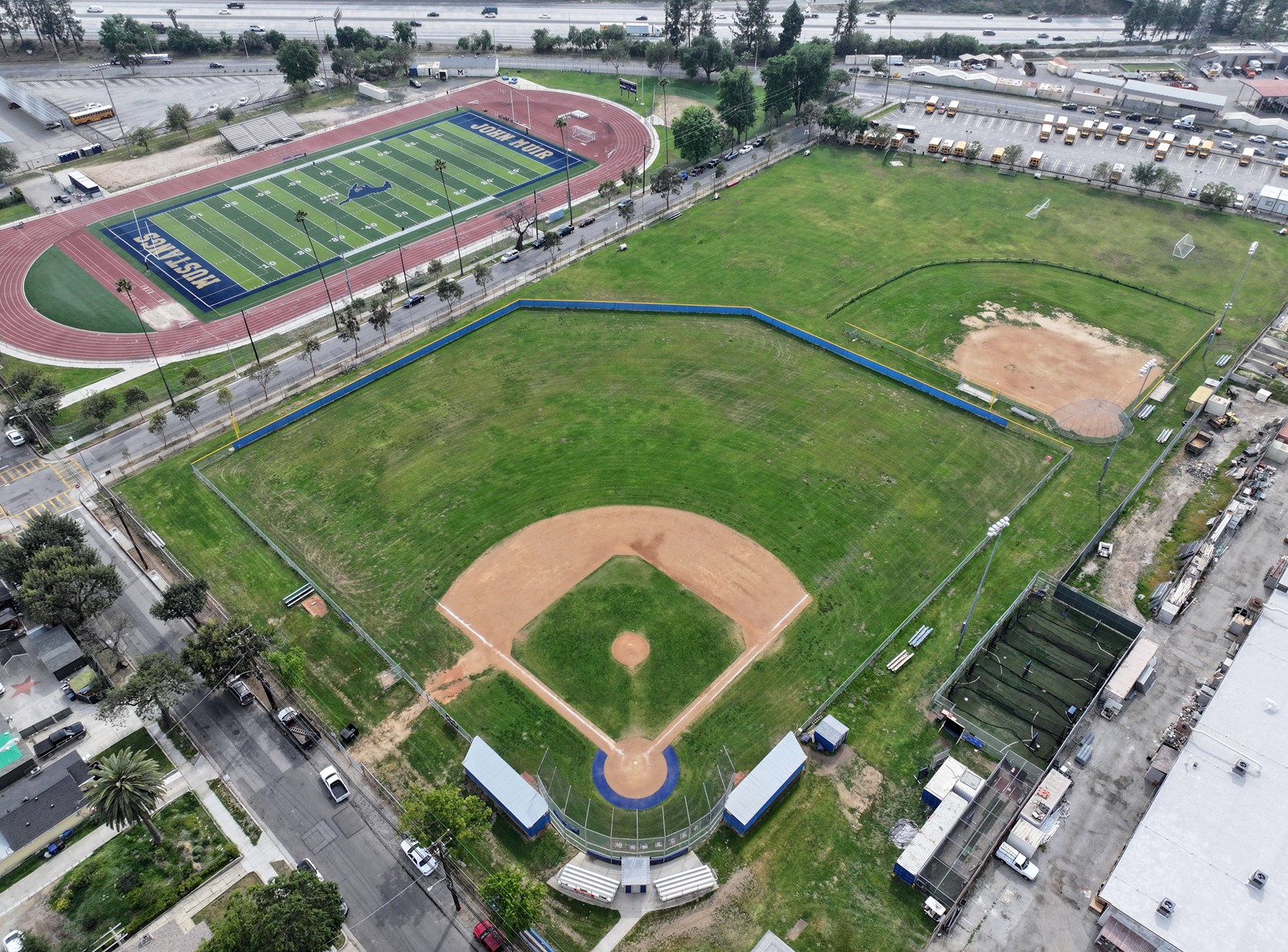
Recent soil testing at Pasadena Unified School District schools showed “elevated levels of certain substances” at some sites while many were cleared of harmful toxins as a result of the Eaton fire.
“I am pleased to share that many of our schools have been fully cleared, with soil samples showing no elevated levels of harmful fire-related substances,” District Superintendent Elizabeth Blanco said in a note to the district late Thursday.
But according to the district, 18 PUSD sites had at least one area of elevated levels of harmful substances. The substances detected in these initial tests included lead, arsenic, chromium, Polycyclic aromatic hydrocarbons and dioxins/furans.
Sites where elevated levels were found included: Allendale, Altadena Arts Magnet, Blair, Field, Jefferson, John Muir, Longfellow, Madison, Marshall, Octavia Butler, San Rafael, Washington STEM, Webster, Cleveland, Hodges, LaCasita, the District Service Center and the district’s main office.
The sample collected with the highest level of lead was taken from Blair High School at 253 milligrams per kilogram. That sample was taken from next to the tennis courts near Garfield Avenue next to the 110 Freeway.
Blanco said the campuses had been deemed safe, including all outdoor areas such as playing fields and athletic facilities will fully reopen, with normal activities such as recess, physical education and team sports to resume.
Webster and Cleveland were the two sites that had elevated levels that did not include lead. Both showed higher levels of arsenic.
Mandi Holmes, a parent of an Aveson School of Leaders first-grader, who was relocated to the Cleveland campus, was surprised to see the campus with elevated levels of arsenic, given how much of the discussion around soil has been about lead and how far the campus is from the burn scar.
The only positive, Holmes said, is that the spike is contained to one area of the campus. However, in light of the district’s handling of the entire post-fire process, Holmes was not confident in how the district will respond to the results.
“We’re hearing so many different things from so many different people that it’s hard for me to really sink into that sort of trust,” Holmes said.
Holmes also questioned why soil samples were not included from campuses that were completely or partially destroyed in the fire.
While sites like Allendale, in the southernmost tip of the city showed spikes in lead, Don Benito, located in the burn area in Hastings Ranch, did not show any elevated levels of harmful substances.
The list of schools that have been cleared, along with maps of the tested areas, is available at pusd.us/firerelief-safety.
Blanco said next steps schools showing elevated levels include:
• Working closely with local and state health and environmental agencies, including the Los Angeles County Department of Public Health and the Pasadena Public Health Department, to review test results and, if necessary, develop science-based remediation plans that will protect our students and employees.
• Outdoor areas with impacted soil will remain closed until remediation is completed. These spaces will continue to be clearly marked and secured to prevent access.
• Any necessary remediation to be completed before the new school year starts.
• Additional testing and monitoring of impacted soil will be conducted prior to and during remediation.
• Each affected school will receive individual maps showing the affected areas, and reports as they become available.
“We are moving swiftly and carefully to address these results,” Blanco said.
The testing came in response to findings released in April by the Los Angeles County Department of Public Health.
That testing found elevated lead levels in soil samples collected near the Eaton Fire burn area, prompting PUSD to take its own safety measures by conducting independent outdoor soil testing at all campuses.
District officials noted that the recent findings were not from school grounds, and at this time, “there is no indication that any of our campuses — or district sites — are unsafe or that anyone is in immediate danger.”
The primary concern, officials said, is with bare soil, which is limited across campuses and district properties.
Soil issues have become a point of concern in the area, not just at schools but in residential areas, as parcels and lots are cleared from the ash and debris left in the wake of the Jan. 7 Eaton fire, which destroyed more than 9,000 structures in Altadena, Pasadena and Sierra Madre.
Last week, soil collected in a county study from properties in the Eaton and Palisades areas showed that even after debris and soil was removed, toxins such as lead and other chemicals could still be present above health screening levels.
According to Adam Love with Roux Inc., in the Eaton fire area, about 27% of samples from areas the U.S. Army Corps of Engineers removed soil contained lead levels above health screening levels.
However, in samples from where original surface soil remained, exceedances were in 44% of samples.
Officials said in light of the findings, those rebuilding should consider a soil impact assessment and management plan as part of the rebuilding process.
On the school district front, PUSD officials noted that the results for heavy metals such as lead are now in, results may take longer for other potential material in the soil.
Officials said maps will be updated as new data becomes available, and updates will be posted at pusd.us/firerelief-safety as soon as they are ready.
“We want to be abundantly clear: safety is not negotiable,” Blanco said. “That’s why we’re moving forward with both urgency and care. We are grateful to our school communities for their patience as we work to ensure that every student and employee has a safe environment to learn and grow.”


 PREVIOUS ARTICLE
PREVIOUS ARTICLE
